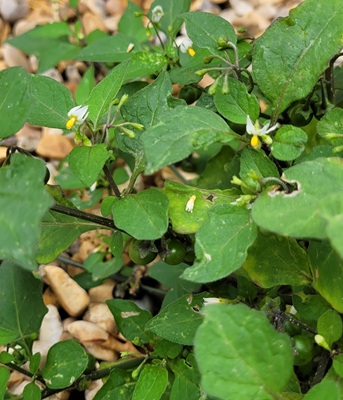Flower Properties
| Property | Value |
|---|---|
| English Name | Black Nightshade |
| MainColor | White |
| PlantType | |
| Growth Type | |
| Season | August |
| ImageUrl | Solanum-002 |
| Photographer | DP |
| Location | Cheshire |
| Human Toxicity |
Flower Details
Description
Black Nightshade is a perennial herb with small, white to purple flowers and glossy black berries. The leaves are ovate and can vary in size, often with a slightly wavy margin. This plant can grow in a variety of habitats, often in disturbed areas.
Distribution
It is widely distributed across Europe, Asia, Africa, and the Americas, often found in gardens, fields, and along roadsides. Black Nightshade thrives in a range of soil types and can tolerate various environmental conditions.
Medicinal/Other Uses

✅ Historically, Black Nightshade has been used in traditional medicine for its anti-inflammatory and analgesic properties. However, caution is advised due to its toxicity.
Edibility

The ripe berries can be consumed in small quantities when cooked, but the unripe berries and other parts of the plant are toxic. It is important to properly identify and prepare the plant before consumption.
Human Toxicity

Mildly Toxic - ingestion of unripe berries or large quantities of the plant can cause nausea, vomiting, and other gastrointestinal issues.
Pet Toxicity

Highly Toxic to dogs and cats - ingestion of the berries or foliage can lead to severe gastrointestinal distress and other health issues.
Active Compounds
Black Nightshade contains solanine and other alkaloids, which can be toxic in high amounts. These compounds contribute to its medicinal properties but also its potential dangers.
